
A quasiperiodic crystal, or quasicrystal, is a structure that is ordered but not periodic. A quasicrystalline pattern can continuously fill all available space, but it lacks translational symmetry. While crystals, according to the classical crystallographic restriction theorem, can possess only two-, three-, four-, and six-fold rotational symmetries, the Bragg diffraction pattern of quasicrystals shows sharp peaks with other symmetry orders—for instance, five-fold.

Located in the campus of Science and Technology of the University of Lille in Villeneuve-d'Ascq ; École Centrale de Lille is a renowned graduate engineering school, with roots back to 1854 as the École des arts industriels et des mines de Lille, re-organised in 1872 as Institut industriel du Nord. It is one of the Centrale Graduate Schools.

The French National Centre for Scientific Research is the French state research organisation and is the largest fundamental science agency in Europe.

Jean Baptiste Perrin was a French physicist who, in his studies of the Brownian motion of minute particles suspended in liquids, verified Albert Einstein's explanation of this phenomenon and thereby confirmed the atomic nature of matter. For this achievement he was honoured with the Nobel Prize for Physics in 1926.
ParisTech is a cluster that brings together 7 renowned grandes écoles based in Paris, France. It covers the whole spectrum of science, technology and management and has more than 12.000 students.
The Institut des molécules et de la matière condensée de Lille - IMMCL Chevreul is a physics and chemistry research institute. It is a member of the University of Lille.

Khatyrkite is a rare mineral which is mostly composed of copper and aluminium, but may contain up to about 15% of zinc or iron. Its chemical structure is described by an approximate formula (Cu,Zn)Al2 or (Cu,Fe)Al2. It was discovered in 1985 in a placer in association with another rare mineral cupalite. These two minerals have only been found at 62°39′11″N174°30′02″E in the area of the Iomrautvaam, a tributary of the Khatyrka river, in the Koryak Mountains, in Anadyrsky District, Chukotka, Russia. Analysis of one of the samples containing khatyrkite showed that the small rock was from a meteorite. A geological expedition has identified the exact place of the original discovery and found more specimens of the Khatyrka meteorite. The mineral's name derives from the Khatyrka zone where it was discovered. Its type specimen is preserved in the Mining Museum in Saint Petersburg, and parts of it can be found in other museums, such as Museo di Storia Naturale di Firenze.
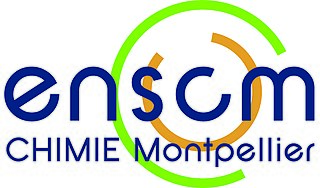
The École Nationale Supérieure de Chimie de Montpellier, or ENSCM, is one of the French Grandes Ecoles, situated in Montpellier. Although it may share academic staff and research activities with the University as well as research bodies such as CNRS, the ENSCM has a particular status as an independent body with its own research laboratories.
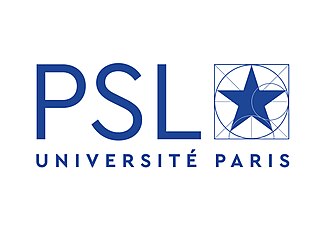
Paris Sciences et Lettres University is a public research university based in Paris, France. It was established in 2010 and formally created as a university in 2019. It is a collegiate university with 11 constituent schools, with the oldest founded in 1530. PSL is located in central Paris, with its main sites in the Latin Quarter, at the Montagne Sainte-Geneviève campus, at the Jourdan campus, at Porte Dauphine, and at Carré Richelieu.

The CEA Paris-Saclay center is one of nine centers belonging to the French Alternative Energies and Atomic Energy Commission (CEA). The Saclay site hosts the administrative headquarters of the CEA. Historically, it was the heart of French nuclear research since Frederic Joliot-Curie founded it in 1946. Its campus was designed by the architect Auguste Perret.

Icosahedrite is the first known naturally occurring quasicrystal phase. It has the composition Al63Cu24Fe13 and is a mineral approved by the International Mineralogical Association in 2010. Its discovery followed a 10-year-long systematic search by an international team of scientists led by Luca Bindi and Paul J. Steinhardt to find the first natural quasicrystal.
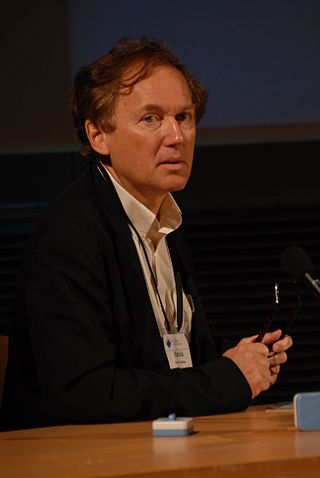
Patrick Tabeling is a French physicist, microfluidics pioneer in France, researcher at the École supérieure de physique et de chimie industrielles de la ville de Paris. He has published more than 200 articles in prestigious peer reviewed journals and his work has been cited more than 14000 times. He has been the director of the Pierre Gilles de Gennes Institute for Microfluidics (IPGG), an interdisciplinary research institution in Paris which regroups more than 300 expert researchers.
Jacques Mering was a Lithuanian-born, naturalised French engineer well known in the fields of X-ray crystallography and mineralogy. He earned the degree of Diploma in Electrical Engineering from École Spéciale des Travaux Publics, and Bachelor of Science from Faculté des sciences. He served in the French Army for a year during 1931–1932 following conscription. He was director of research at the Centre National de Recherche Scientifique in Paris, and subsequently Director of CNRS Laboratory in Orléans.
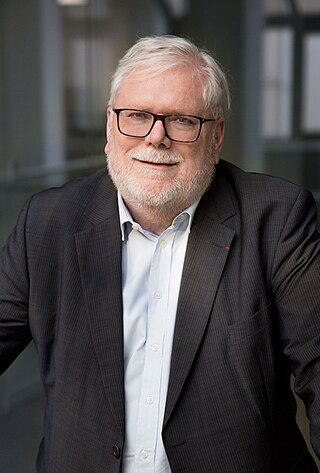
Alain Fuchs is a Swiss-born French Doctor of Science and chemistry Professor, specialized in molecular simulation. He served as the president of Chimie ParisTech - PSL from 2006 to 2010. He has served as the president of the French National Centre for Scientific Research from 2010 to 2017.' He became an Officer of the Legion of Honour in 2014.
Shrikant Lele is an Indian metallurgical engineer and a distinguished professor of Indian Institute of Technology (BHU) Varanasi. He is a former director of the Institute of Technology of the university (2002–05) and is known for his studies on structural metallurgy. He is credited with reportedly original work on X-ray diffraction effects, solid state and martensitic transformations as well as spinodal decomposition in alloys and electron diffraction from quasicrystals. His researches have been documented in several peer-reviewed articles; and Google Scholar the online article repository of Indian Academy of Sciences has listed 33 of them.
Daniel Mansuy is a French researcher and chemist born in 1945 in Châteauroux (Indre), a member of the French Academy of Sciences.
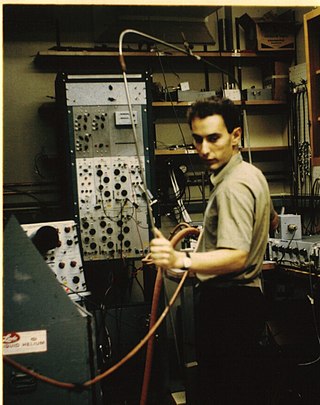
Denis Jerome is a French experimental physicist in the field of condensed matter, who contributed to the discovery of superconductivity in organic conductive matter.

Denis Gratias, born on 22 September 1947 in Paris (France) is a French scientist, emeritus research director at the CNRS. His speciality is materials science, in particular crystallography. Since the discovery of quasicrystals by Dan Shechtman in 1982, he has contributed to their description, notably by developing theoretical models. He is a correspondent member at the French Academy of Sciences since 1994.
The prix Jaffé is a prize of the Institut de France awarded by nomination of the French Academy of Sciences. The award is financially supported by the Jaffé foundation of the Institute.

Annick Loiseau is a French physicist who is a researcher at the French National Centre for Scientific Research Laboratory of Microstructure Studies and Mechanics of Materials. She was the first woman to be appointed to the Office National d'Etudes et de Recherches Aérospatiales (ONERA). Her research considers low-dimensional materials such as carbon nanotubes, graphene, and boron nitride. In 2006 she was awarded the CNRS Silver Medal.














